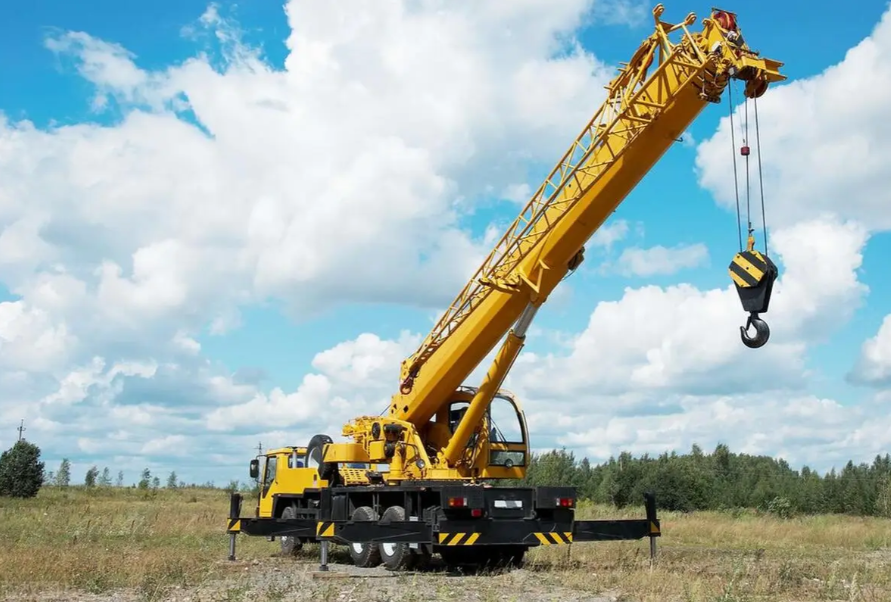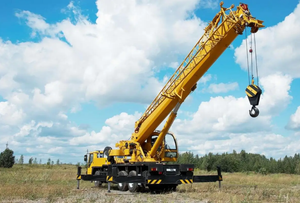
Crane Inspection Methods and Standards Guide Inspection, Audit and Certification Services for Warehousing and Manufacturing Facilities
Crane, as an important material handling machine, is widely used in ports, construction sites, workshops, etc. Its quality directly affects the safety and efficiency of operations. To ensure that cranes meet design and safety requirements, systematic inspection and verification must be carried out. This article, based on the key quality control points in factory inspection and verification, elaborates on the classification, inspection standards, testing methods, and key points of factory audit for cranes, providing practical references for purchasers, quality inspectors, and project managers.
I. Main Classification and Application Scenarios of Cranes
Automobile crane (QY series)
Installed on an automobile chassis, it is suitable for road access and rapid transfer scenarios. During inspection, special attention should be paid to checking the stability of the outriggers, lifting performance, and driving safety.
Tire crane
Suitable for locations such as freight yards and docks where the moving distance is limited. The lifting and traveling functions (if available) and tire ground pressure need to be verified.
Track-mounted crane (QUY/SCC series)
The ground contact area is large, suitable for soft ground. The inspection focuses on the integrity of the tracks, the distribution of grounding pressure, and the adaptability for transfer.
All-terrain crane
It has the characteristics of both truck-mounted cranes and off-road cranes. It is necessary to check the multi-axle drive, full-wheel steering and crab movement functions.
Special cranes (such as rescue vehicles and clearance vehicles)
Designed for specific tasks, they need to be inspected according to dedicated standards.
II. Inspection Standards and Basis
The inspection of cranes should follow international, national and industry standards, which mainly include:
GB/T 6067.1 "Safety Regulations for Hoisting Machinery"
GB/T 5905 "Test Specifications for Hoisting Machinery"
ISO 4301 "Standard for Classification of Cranes"
CE certification, ASME B30 (for export products, it is mandatory)
GB/T 2828.1 "Counting Sampling Inspection Procedures" (used for AQL sampling schemes)
III. Key Inspection Items and Methods
1. Document and Label Verification
Verify the consistency between the product nameplate, certificate of conformity, manual and the order requirements;
Check the safety warning signs (such as lifting capacity, working level, and safety operation instructions);
Verify that the characteristics curve of the crane matches the actual situation.
2. Sensory inspection (accounting for over 70% of the inspection items)
Look: Are there any cracks, deformations or rust on the structural components? Is the welding quality in line with the requirements?
Listen: Are there any abnormal noises during operation (such as gear meshing, brake operation)?
Smell: Identify abnormal odors such as overheating and burning.
Question: Inquire about the historical faults and operational status of the equipment from the operators.
Touch: Check whether the temperature rise of the bearings, motors, etc. is normal.
3. Safety inspection of common components
Hook: Check for cracks, wear, deformation and the effectiveness of the anti-detachment device;
Steel wire rope: Broken wires, wear and corrosion conditions, reliability of end fixation;
Brake system: Brake clearance, braking capacity and hydraulic system sealing performance;
Spool and pulley: Wear and cracks in the rope groove, and integrity of the protective device;
Reducer: Oil level, leakage condition and operating noise;
Wheels and tracks: Wheel flange wear, rail-clinging phenomenon and track installation accuracy;
Coupling: Connection reliability, condition of buffer element wear.
4. Safety protection device testing
Overload protection device: Sensitivity test, is the error within the allowable range?
Torque limiter: Test alarm and cut-off functions using the amplification method or the weighting method;
Limit position limiter: Is the travel switch operating reliably?
Windproof device: Function effectiveness of the clamping device and anchoring device;
Anti-sway device: Stability protection for boom-lifting cranes;
Buffer: Compatibility with collision energy and integrity;
Safety devices: Are the protective covers, guardrails, and electrical rainproof covers, etc. complete?
5. Electrical System Inspection
Control Devices: Integrity of electrical components, cable aging condition, insulation resistance;
Electrical protection: Effectiveness of short circuit, voltage loss, zero position, and overcurrent protection functions;
Grounding resistance: The grounding resistance of the metal structure is ≤ 4Ω, and the grounding of electrical equipment is reliable.
6. Inspection of Metal Structure
Are there any instability, fatigue cracks or corrosion in the main load-bearing components?
Check for any cracks or loosening in the connection welds, bolts, and rivets.
Does the pre-tightening force of the high-strength bolts meet the design requirements?
7. Driver's cab and operating environment
The stability of the driver's cab suspension, the effectiveness of door locks and electrical interlocks;
Insulation flooring, fire extinguisher, and 36V safety voltage lighting fixtures are provided;
Protective devices for harmful environments (such as dust-proof, poison-proof, and noise-reducing devices).
8. Performance Test
No-load Test: Whether all mechanisms operate smoothly;
Rated load test: Function verification of lifting, running, slewing and other mechanisms;
Static load test: Structural integrity under 1.25 times the rated load;
Dynamic load test: Dynamic performance under 1.1 times the rated load;
Stability test: The overturning resistance capability of boom-type cranes.
IV. Key Points of Factory Audit
During the factory audit process, it is necessary to comprehensively assess the quality management system and production capacity of the manufacturing enterprise:
Quality Management System
Has it obtained ISO 9001 certification?
Do you have complete quality control documents (inspection procedures, operation instructions)?
Supply Chain Management
The supplier qualifications of the main components (steel wire rope, motor, brake) and the inspection records of incoming materials;
Material certificates (such as steel strength, welding material specifications).
Production process control (In-Process Quality Control)
Welding process qualification and welding qualification certificates;
Processing accuracy and heat treatment records of structural components;
Torque control and inspection during the assembly process.
Testing equipment and calibration
The test bench, torque sensor, insulation tester, etc. are calibrated regularly;
Non-destructive testing (UT/MT/PT) equipment and personnel qualifications.
Traceability system
From raw materials to finished products, there should be unique identification and traceability records.
Compliance and Certification
The product must obtain the necessary certifications (such as CE, ISO) and comply with the regulations of the target market.
V. Common Defects and Judgement Criteria
Defect Category Concrete Manifestation Judgement Criteria
Critical Defect Structural cracks, brake failure, safety device malfunction Reject outright, batch rejected if disqualification
Major Defect Worn-out steel wire rope, weld defects, oil leakage AQL = 1.0
Minor Defect Poor coating, incorrect labels, missing documents AQL = 2.5
Sampling Scheme: Follow GB/T 2828.1. Generally, Level II is adopted, and the AQL standards are as above.
Critical criterion: For serious defects, 0 is accepted and 1 is rejected. For major and minor defects, they are judged according to the AQL standard.
VI. Conclusion
Crane, as a high-risk special equipment, its quality verification must strictly follow national standards and acceptance procedures. Through systematic factory inspections, performance tests, and factory audits, the risks of the product can be comprehensively controlled, ensuring operational safety. It is recommended that purchasers and quality inspection institutions pay particular attention to structural safety, braking performance, and safety devices during the inspection process, and rely on professional tools and international standards to conduct tests to ensure that the equipment meets the design and application requirements. Only by integrating quality control throughout the production and inspection process can we provide users with safe and reliable lifting solutions.
分享这个商品

Crane Inspection Methods and Standards Guide Inspection, Audit and Cer
Crane, as an important lifting machine, is widely used in construction sites, workshops, and other places. Its quality directly affects the safety of operations
